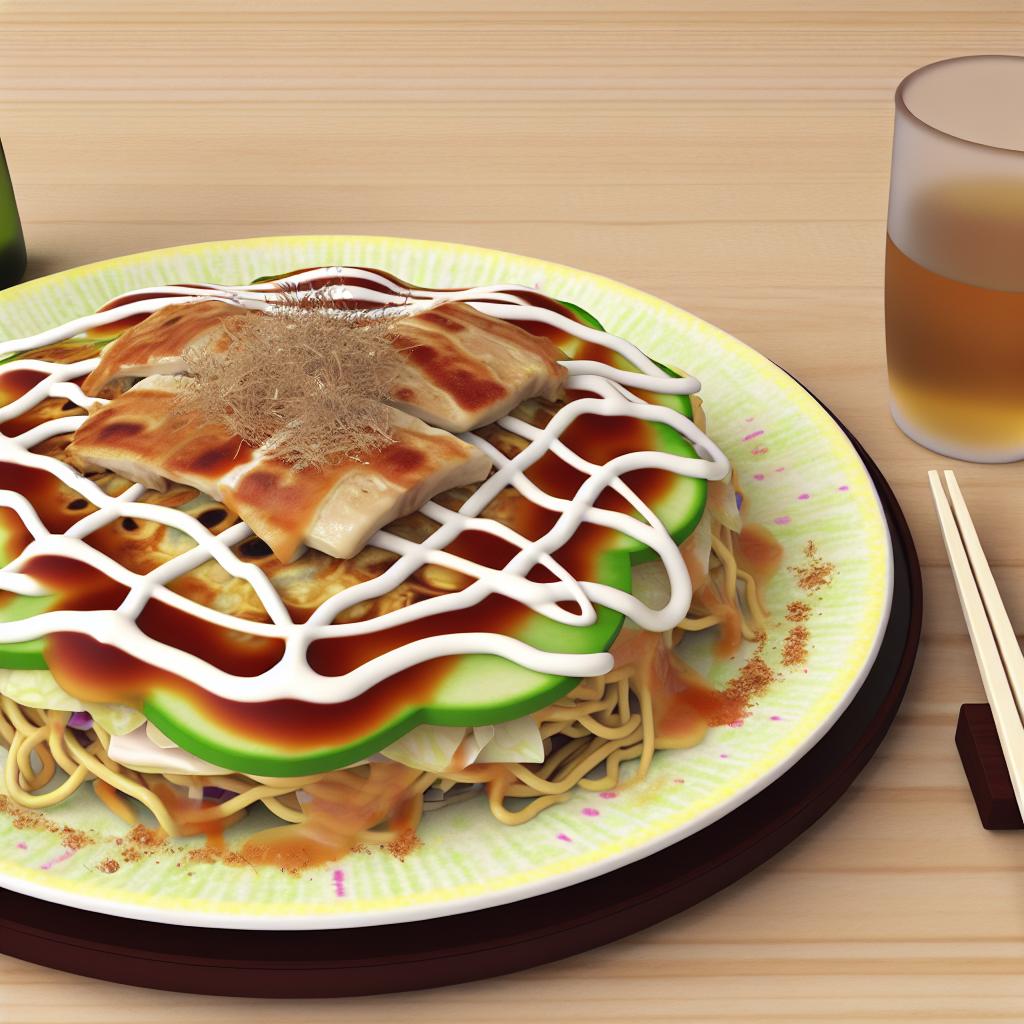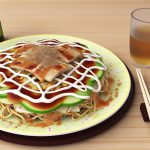Introduction to Hiroshima-Style Okonomiyaki
Hiroshima-style okonomiyaki is a distinctive variation of the popular Japanese savory pancake that originates from Hiroshima Prefecture. Unlike its Osaka counterpart, Hiroshima-style okonomiyaki features a multilayered approach to cooking, which adds both complexity and a unique texture to the dish. The word “okonomiyaki” comes from the Japanese words “okonomi,” meaning “how you like” or “what you like,” and “yaki,” meaning “grill” or “cook.”
Key Ingredients
The making of Hiroshima-style okonomiyaki involves a set of fundamental ingredients that are integral to its distinct flavor and texture. These typically include batter, cabbage, bean sprouts, pork belly, and noodles. In addition, sauce and optional toppings such as mayonnaise, aonori (seaweed flakes), and katsuobushi (bonito flakes) enhance the dish. One of the key differences from the Osaka version is the inclusion of noodles—either yakisoba or udon—as a crucial component.
Batter
The batter forms the foundation of Hiroshima-style okonomiyaki. Made from a simple mixture of flour and water, it occasionally incorporates grated nagaimo (a type of yam) to add a special touch. The batter serves not just as a base but also as a glue that holds the layers together during the cooking process.
Vegetables and Protein
Cabbage plays a pivotal role in providing both texture and flavor, adding a pleasant crunch to the palate. Pork belly slices are often chosen as the protein topping due to their rich flavor, which merges seamlessly with the other ingredients, creating a savory delight.
Noodles
A layer of noodles is a principal feature that distinguishes this style from others. Typically pan-fried separately, the noodles are cooked on gas burners or electric griddles, ensuring they develop a crispy texture. This layer is often topped with vegetables and protein, offering a complex flavor palette.
Preparation Method
The preparation method for Hiroshima-style okonomiyaki is both specialized and intricate. It begins with the creation of a crepe-like layer of batter on a hot griddle. As the batter sets, it is topped generously with cabbage, bean sprouts, and other optional vegetables. Subsequently, slices of pork belly are arranged on top. After these ingredients have partially cooked, a serving of pre-fried noodles is included. An egg is cracked onto the griddle, then amalgamated with the stack of ingredients, forming a cohesive pancake.
The Sauce
A unique aspect of Hiroshima-style okonomiyaki is its signature sauce—a thick, sweet-savory concoction. While similar to Worcestershire sauce, it boasts added sweetness and umami, enhancing the dish’s overall flavor. Many diners prefer to garnish their meal with mayonnaise, as it provides a creamy contrast to the tangy sauce, enriching the gastronomic experience.
Where to Enjoy
Hiroshima-style okonomiyaki can be enjoyed in specialized restaurants known as okonomiyaki-ya or in dedicated stalls, capturing the essence of this culinary art. Travelers venturing to Japan should not miss Hiroshima’s Okonomimura, a multi-story emporium filled with dozens of okonomiyaki stalls. It serves as a must-visit destination, offering visitors a front-row seat to the craftsmanship involved in preparing this iconic dish. Many establishments feature an open kitchen, allowing diners to observe the meticulous crafting of their meal and enhancing the overall experience.
Variations and Personalization
Hiroshima-style okonomiyaki offers flexibility, a testament to the name “okonomi,” which means “how you like” or “what you like.” While the traditional version includes noodles, pork belly, and cabbage, variations exist to suit different tastes and dietary preferences. For instance, seafood aficionados may opt to add shrimp or squid, incorporating a maritime flavor into the dish. Vegetarians might replace pork and seafood with mushrooms or additional vegetables, allowing the flavors to converge harmoniously. These possibilities make Hiroshima-style okonomiyaki a dish that can be personalized to perfection.
Cultural Significance
Hiroshima-style okonomiyaki is not merely a dish but also a cultural symbol. Its origins in Hiroshima Prefecture contribute to the regional identity, embodying aspects of the culinary landscape that resonate with locals and tourists alike. The communal experience of dining at an okonomiyaki-ya, seated around a teppan, sparks conversations and evokes a sense of togetherness. Moreover, the art of preparing the dish demonstrates skill and expertise, showcasing the dedication put into each serving.
Global Appreciation
Although Hiroshima-style okonomiyaki is a localized specialty, its popularity extends globally. As Japanese cuisine garners international acclaim, this unique dish has become a favored choice among culinary enthusiasts worldwide. Several international eateries specializing in Japanese cuisine have introduced their patrons to this multilayered delicacy, contributing to a growing appreciation for the nuanced flavors and textures it offers. This global reach underscores the dish’s ability to transcend cultural boundaries while retaining its authentic essence.
Further Reading
For those interested in exploring more about Hiroshima-style okonomiyaki, additional resources are readily available. One can visit Okonomimura’s official site to delve deeper into the multi-faceted world of this dish, or consult various culinary travel websites that offer insights into Hiroshima’s vibrant food culture. By learning more, enthusiasts can discover tips, variations, and the wider context surrounding Hiroshima-style okonomiyaki.
In conclusion, Hiroshima-style okonomiyaki offers a delectable culinary experience characterized by its distinct layers and ingredients. The dish showcases the diversity within Japanese cuisine, serving as a testament to the rich cultural heritage of Hiroshima Prefecture. As a must-try for tourists and a beloved staple for locals, Hiroshima-style okonomiyaki continues to embody the essence of Japanese gastronomy, captivating palates and hearts alike.













